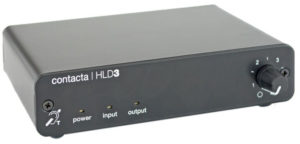by Neil Bauman, Ph.D.
November 30, 2015
A man explained:
While talking on the phone the other day, I accidentally turned on the T-coil program in my hearing aids and got a boost in volume and since the microphone was muted in that particular program, cut out the noise in the room. I also tried this with my iPhone with similar success. I didn’t know about this.
I have tried to figure out why this works and can only think that since most speakers use some form of a magnetic medium to move the “cone”, so to speak, that that magnetic field wakes up the T-coil in my hearing aids. Or something like that. So my question is this: Why does this work? Once again no audiologist ever mentioned such a phenomenon to me.
Unfortunately, the benefits of T-coils are still a well-kept secret today. Although audiologists know about t-coils and telephones, few ever seem to mention them. Fortunately, that is now slowly changing.
T-coils have been around for a long time now. Would you be surprised to know that the first hearing aid to have a T-coil was 77 years ago—way back in 1938!
Did you know that T-coils were actually invented for the express purpose of helping hard of hearing people hear better when using the telephone? In fact, the “T” in T-coil stands for “telephone”. Originally it was a “telephone coil”. Now it is often shortened to “tele-coil” or more commonly just “T-coil”.
In the days before digital hearing aids, it was often referred to as a “T-switch” as there was a switch on hearing aids back then often labeled “O”, “M”, “T” for “Off”, “Microphone” and “T-coil” respectively. You flipped the switch to the “T” position to activate the T-coil when you wanted to make a phone call.
You are correct in understanding how T-coils work. Originally telephone earpieces were small loudspeakers. The voice coil moving past the stationary permanent magnet created a varying magnetic field that the T-coil picked up. (If you know how a transformer works, you can think of the t-coil and the voice coil in the telephone handset as the two parts of a transformer, separated by an air core.)
Essentially, when current flows though a wire it creates a magnetic field. An equal and opposite current is induced into any other wire within this magnetic field. That’s how the telephone transfers the sound signal to your T-coil wirelessly.
All was well for a number of years. Then the phone manufacturers wanted to make phones smaller and lighter and less power hungry. (This is especially true in cell phones.) Thus, they embraced a new technology—the piezoelectric crystal. When current flows through a piezoelectric crystal, it caused the crystal to vibrate in unison to the varying voltage. These vibrations push the air molecules and produce the sound waves you hear in the earpiece.
Unfortunately, by doing away with the voice coil in the phone’s earpiece, the magnetic field generated now was so small that T-coils couldn’t pick it up. Thus the T-coils in hearing aids were useless for use on the phone.
Things would have stayed this way if hard of hearing organizations such as the Hearing Loss Association of America (HLAA) hadn’t petitioned the FCC to require phones to be hearing-aid compatible—meaning that hard of hearing people could once again use their T-coils to hear on the phone.
Eventually the FCC made it a requirement that a certain percentage of the models each phone company carried needed to be t-coil compatible. This percentage is slowly being increased to 100% so eventually, we will be able to hear on any phone via our T-coils.
In order to make modern phones T-coil compatible, phone manufacturers didn’t go back to using miniature speakers containing voice coils. Instead, they just added a corresponding coil in the phone’s ear piece to create the required magnetic field.
Thus, today you should be able to use your T-coils with most phones, whether they are landline, cordless or cell.
However, there is still a problem with T-coil use. You see, T-coil technology is very directional. It’s just one of the laws of physics. This means that in order to transfer a good signal, both the coil in the phone and the T-coil in your hearing aid need to be in the same plane. Since the speaker voice-coil in early phones had to be horizontal, T-coils in hearing aids were horizontal too.
This was (and still is) fine for phone use, but T-coils are useful in many other situations including counter and room loops. The problem is that room loops need to be oriented vertically, and horizontally-oriented T-coils do not pick up a useful signal from vertical room loops.
Some hearing aid manufacturers decided to mount the T-coils at a 45° angle. This only reduces the signal by 3 dB (not enough to worry about) so it appeared to be a good solution, but in retrospect, it just introduced a host of other problems related to directionality.
For example, depending on which way the T-coil was aimed at the 45° angle inside your hearing aid (i.e. front to back as opposed to side to side), when using a room loop, you might have to face the wall in order to hear the speaker at the front. (And it’s decidedly difficult to speechread someone when you are facing the wall!).
The solution to this is to mount all T-coils vertically, and to mount all corresponding coils in phones vertically. Then T-coils could be used effectively on phones and in looped venues without directionality problems.
Why don’t they do this? As I see it, the phone companies have always mounted their coils horizontally and don’t seem to want to change—even though there is no reason to mount these coils horizontally since they don’t use miniature loudspeakers anymore.
It is up to all of us hard of hearing people to advocate for vertically-mounted T-coils in hearing aids, and vertically-oriented corresponding coils in all phones so we can have barrier-free communication, which is only fair and right.



Would a t-coil increase the clarity of a phone call while talking with someone who is on cell phone? I have a reverse slope loss and have trouble understanding male voices who are on a cell phone. I currently stream my calls using an iPhone 6 and Oticon OPNs.
Hi Tony:
The only way to know for sure is to try it. Don’t your hearing aids have t-coils? As I’ve said many times before, don’t ever, and not even that often, buy hearing aids that don’t have t-coils. They can be that important–and don’t add a penny to the cost of the hearing aids.
Having said that, some streaming devices do indeed produce beautiful clear sound from cell phones. Unfortunately, the streamers from some manufacturers give more muddy sound and t-coils then are significantly better.
Since you have a reverse slope loss (like I have), it can be very hard to understand some people if their voices are not of the necessary pitch for our ears. I find that a tone control really helps–but they only seem to be available for landline phones, not cell phones.
Cordially,
Neil
Thanks for the response Neil. I’m asking for a CaptionCall phone at work since I often speak with people who are on cellphones a few times per day. Would the tone control work with the CaptionCall phone? Is there one that you recommend? Thank you.
Hi Tony:
The CaptionCall phone has a three step generic tone control–low, medium and high, plus a custom setting that you can sculpt to exactly match your audiogram if you want. Thus you can find your sweet spot and then use the custom setting for everyone. The trouble is that everyone’s voices are different. I find I use the custom setting the most, but I quickly change to medium or high if that makes a person’s voice more intelligible.
Cordially,
Neil
I cannot hear well over my present landline phone and have been unable to find one that has a T coil. Do all new landline phones have these coils or could you recommend one that does? I have been frustrated over using a Clarity phone, abandoned it. Is the directional use the problem?
Hi Mary Anne:
They are supposed to be hearing aid compatible–meaning having a coil that corresponds to the t-coil in your hearing aid. In order to work well, your t-coil and the phone’s corresponding coil have to be in the same plane. If they are at 90 degrees to each other, you will hear almost nothing (that’s the null position). Typically, the coil in the phone receiver is in the horizontal plane, whereas the t-coil in your hearing aids should be in the vertical plane . (Sometmes they try to get the best of both world and put them at 45 degrees off vertical.
So, to see how to get the best coupling, just listen to the dial tome and move the receiver in all ways and see which way you can hear the best. Years ago, I found that with one phone, I had to turn the receiver around and listen through the back while at the same time having the mouthpiece up over my head! That is ridiculous, but it wan the only way I could hear on that phone.
The only way to know which phone will work with your hearing aids is to try them out.
This problem could be easily solved if ALL hearing aid manufacturers and phone makers oriented their coils so that when you use them, they’d be oriented vertically. (Then they’d work well for phones, neckloops and room loops.
Cordially,
Neil
Hello, so I came across this article. I wear hearing aids. I have wondered why I would get a boost of hearing. Then it would be gone. So if you move your phone/ receiver while your talking you loose that extra boost. Correct? I have never been told I have t-coils like you mention…they don’t tell us. Thanks for the info greatly appreciated!
Hi JJ:
If you have t-coils turned on and you use the phone, then you have to hold the phone receiver in the sweet spot for you hearing aid t-coils to get the wonderful results t-coils can give.
If you do not have t-coils in your aids or they are not turned on, then the phone receiver position is not so critical.
Cordially,
Neil